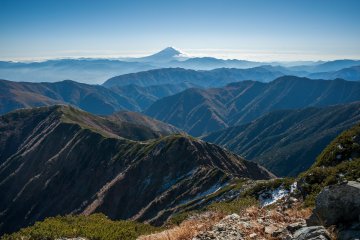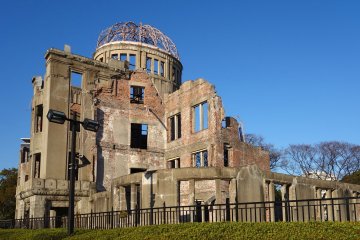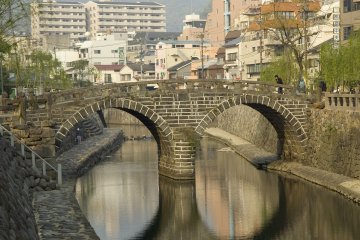Overview
About as varied as a country can be, modern Japan is made up of eight distinct regions. Comprised of the nation's 47 prefectures, these eight regions reflect a diversity in landscape, culture and heritage that is as unexpected as it is memorable. Here is simple look at the eight regions of Japan.
Chubu
Japan's Chubu region makes up the bulk of central Honshu island. Its nine prefectures - Aichi, Fukui, Gifu, Ishikawa, Nagano, Niigata, Shizuoka, Toyama and Yamanashi - could be considered the mountain capital of the country with massive ranges offering excellent snow and outdoor activity opportunities. A region laden with historic villages, castles and crafts, Chubu is essentially rural at heart, offering some of Japan's best produce, particularly fruit, tea and rice.
The JR Joetsu, Hokuriku and Tokaido Shinkansen Lines provide access to much of Chubu.

Chugoku
The Chugoku region lies at the westernmost edge of Honshu island. Its five prefectures - Hiroshima, Okayama, Shimane, Tottori and Yamaguchi - are filled with turbulent histories amongst a powerfully feudal heritage. Memorialising its atomic tragedy with hope, the region's warrior castles, idyllic islands, and ancient mythological and religious sites are blended amid some of the nation's most unexpectedly scenic natural locations.
The JR Sanyo Shinkansen Line provides access to much of Chugoku.

Hokkaido
The northernmost region and prefecture of Japan, Hokkaido is also its second largest island. A veritable winter wonderland, Hokkaido is rugged, beautiful and home to quite possibly the best seafood in the entire country. Blessed with a pristine wilderness, traditional Ainu heritage and a world renowned winter culture, Hokkaido is one of Japan's most popular and appreciated prefectures.
The JR Hokkaido Shinkansen Line provides access to the island.

Kansai
Heading southwest from central Honshu lies the Kansai region. Its seven prefectures - Hyogo, Kyoto, Mie, Nara, Osaka, Shiga and Wakayama - combine an aristocratic pedigree with spiritual traditions and the ever moving energy for modern living. Home to many of Japan's most celebrated sites and destinations, Kansai offers modern energy with a sophisticated heritage.
The JR Tokaido and Sanyo Shinkansen Lines provide access to Kansai.

Kanto
A third of the population of Japan lives in the Kanto region. Headed by Tokyo, one of the world's great metropolises, the region's seven prefectures - Chiba, Gunma, Ibaraki, Kanagawa, Saitama, Tochigi and Tokyo - literally offer everything and anything to visitors. A full range of destinations, from neon-lit cityscapes & urban entertainment to tropical islands & mountain retreats, make Kanto possibly Japan's most popular destination.
The JR Tohoku, Tokaido and Joetsu Shinkansen Lines all provide access to Kanto.

Kyushu
One of Japan's four main islands, the Kyushu region is the nation's westernmost region. Its eight prefectures - Fukuoka, Kagoshima, Kumamoto, Miyazaki, Nagasaki, Oita, Okinawa and Saga - feature a rich and dynamic cultural life. A volcanic heart and tropical paradise combine to offer visitors both awe and tranquillity. Unique histories, unique cultures and unique locations make Kyushu one of the nation's most rewarding destinations.
The JR Kyushu Shinkansen Line provides access to much of Kyushu.

Shikoku
One of Japan's four main islands, the Shikoku region offers stunningly dramatic landscapes and world renowned cultural heritages. Its four prefectures - Ehime, Kagawa, Kochi and Tokushima - attract outdoor enthusiasts and visitors prepared to enjoy uniquely rugged mountains, jagged valleys, coastal vistas and open-ended traditions.
The JR Tokaido-Sanyo Shinkansen to Chugoku, and from there various express trains, provides access to Shikoku.

Tohoku
The northernmost region of Honshu island, Japan's Tohoku region is the nation's original wilderness. Remote, scenic and home to bitter winters, the region's six prefectures - Akita, Aomori, Fukushima, Iwate, Miyagi and Yamagata - are filled with ancient samurai strongholds, natural hot springs and dreamlike rural environments.
The JR Tohoku, Yamagata and Akita Shinkansen Lines provides access to Tohoku.
















